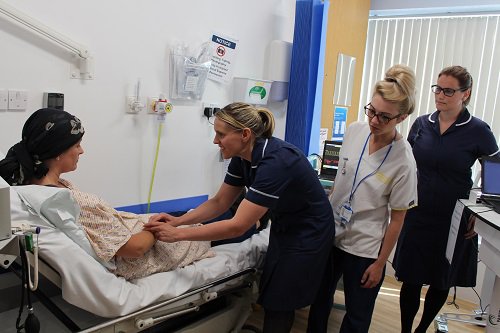 The Simulation and Clinical Skills Teams at Wirral University Teaching Hospital have been mobile around the Trust working closely with Departments and Teams to bring educational events to clinical areas.
The Simulation and Clinical Skills Teams at Wirral University Teaching Hospital have been mobile around the Trust working closely with Departments and Teams to bring educational events to clinical areas.According to the Society for Simulation in Healthcare, simulation training is “the imitation or representation of one act or system by another” and serves as “a bridge between classroom learning and real-life clinical experience.”
No longer must students practice giving injections by using an orange or budding surgeons practice suturing by using a piece of felt. As part of an AQuA-supported quality improvement project the simulation team have been helping the Acute Medical Unit (AMU) and Ambulatory Care Unit (ACU) teams deliver sepsis education using in-situ simulated scenarios (pictured).
They have been using state-of-the-art mobile audio-visual equipment (SMOTS) to pilot upcoming the new sepsis material and provide feedback and debriefing to the teams.
The response from clinical staff involved has been excellent and they have really enjoyed this new way of learning through supported practice in a familiar environment.
Local Sepsis Lead Deputy Lauren Forbes organised nursing teams for the simulation and Advancing Quality Improvement Practitioner Leeanne Lockley provided a power point teaching session before hand.
Both helped to organise two very successful mornings of simulation supported by a live simulated patient, Julie Williams.

